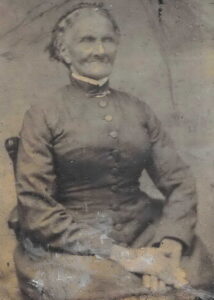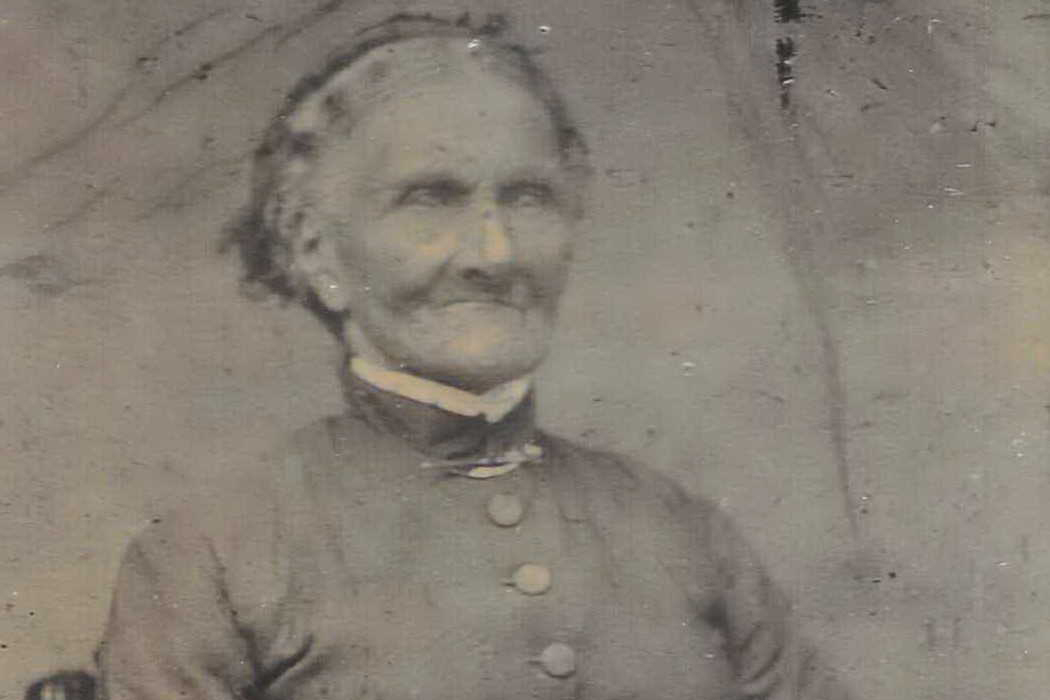
Matilda, Enslaved Woman from Oliver’s Memoir – Sheppard Lane, Clarksville
It’s been a few years since I’ve enjoyed the opportunity to deeply drive into a genetic genealogy case with a MRCA (most recent common ancestor) positioned more than 4 generations back.
Typically, my DNA clients, whom I’ve been serving since 2015, present themselves with a request to solve a mystery which originated only 1-2 generations away, and we typically don’t need to leverage MRCAs more than 2-3 generations back.
In scenarios which more customarily reach the doorstep of the ‘one day I’ll do this’ company I’d created in 2015, GenQuestDNA, I’d administer a kit and practice a skill I’ve yet to master: patience – waiting the 6-8 weeks for lab results.
Upon receiving notification that results are ‘ready’, I’d sign-in with anticipation and hope, but also tempered enthusiasm. If we’re extraordinarily lucky, a half sibling/first cousin is revealed, which makes quick work of solving whatever needs to be solved. After having worked and solved dozens of genetic mysteries, I’m self-conditioned to expect the worse, but hope for the best.
A second cousin match usually isn’t too difficult, as we’re now matching cousins who likely share a set of great grandparents.
Third cousins? Time consuming, as there is more to weed through. Yet, optimism prevails.
Fourth cousins? I may sigh, and loudly blow through puckered lips, or perhaps roll my eyes. We’re going to need a white board and an excel chart.
I never say ‘no’, and I’ve yet to charge a fee.
Fifth to eighth cousin matches? I compare this to going to the US tennis open but only having grounds access – no stadium access. It’s crowded, hot, long lines, no place to sit – but at least you’re IN, can see everyone and feel the energy. It certainly isn’t impossible. After all, EVERY case is solvable, but some take much more time and advanced skill.
Several years ago, when working to prove out the bits and pieces of Oliver Gilbert’s autobiography, I started researching and documenting every single name mentioned within, wanting to prove that every person was where Oliver said they were, at the time he said they were. This meant researching and documenting neighbors, friends, relatives, enslavers, abolitionists, barbers, hoteliers, shopkeepers, tavern operators, musicians, millers, blacksmiths, livery stable keepers, jailers, slave traders, politicians, philanthropists, etc.
Whew! Chile! The more I researched, the more my mind was blown. Researching these players via a historic lens offers the hindsight GG Oliver wasn’t afforded.
This has also yielded the need for a good deal of travel.
Over the years, I’ve taken historical research trips to Boston, across the Canadian Maritimes, New Hampshire, Maine, Saratoga Springs, Manhattan, Cape May, many trips to Lancaster County, PA and, of course, Maryland. I’ve donned white gloves and inspected historical artifacts related to the people and places named above, and O C Gilbert has left us a trail of LOAVES of bread, beyond the usual breadcrumbs.
One such focus of research was Oliver’s brother, Reuben.
Reuben and Oliver had planned to escape together in a well-plotted orchestration, but circumstances foiled their arrangement, and the younger Oliver was left behind as Reuben successfully fled.
Sparing the details for another entry, Reuben and Oliver were joyously reunited in 1848 when Oliver reached Lancaster, PA and abolitionist Abigail Jackson revealed to him that his brother was recovering from injuries (he’d leapt from a moving train) at a neighboring farm. It was Abigail Jackson who’d suggested that Reuben and Oliver change their names, with Reuben Kelly changing his to Amos Gilbert and Oliver also changing his surname to Gilbert. Amos Gilbert, Quaker abolitionist, had been the first receiver of Amos as he’d entered the Lancaster, PA UGRR network.
Reuben (now Amos) and Oliver went on to pursue freedom as brothers, aligned in solidarity and supporting each other across multiple states using the Underground Railroad network until both eventually reached Canada. Amos then settled in Halifax and New Brunswick, as Oliver pushed on for Europe; a plan which was abandoned when his ship was wrecked off the coast of Canada.
Amos and Oliver continued to correspond in life and their children came to know each other and travel to visit each other. There is much more to the story of Amos, as his sisters escaped and fled to him. Another time.
So, when creating a family tree for Oliver, his named siblings, aunts, uncles and cousins, I reversed course and in addition to tracing back into the depths of history, I traced forward to find current-day descendants.
One such current-day descendant is the 91-year-old 2nd great grandson of Reuben/Amos, who, living in California, enthusiastically agreed to submit his DNA sample to the lab for matching.
The result was initially quite concerning to me, as he wasn’t matching as readily as I’d expected/hoped to the other testers in the Gilbert line under Oliver’s son, Stanley.
Afraid we had an NPE on our hands (NPE is a non-paternity event, also known as misattributed paternity – where a named father isn’t the genetic father) – and we had 4 generations under Amos where this NPE could have originated.
However, this concerning result didn’t stand to logic. Each ancestor between this current-day male descendant and Amos had been female. A misattributed DNA link would have had to come from a mother, which is much less likely. An ‘unknown mother’ is unusual, unless in the case of adoption, be it legal or social.
I sat with Amos’ branch of our tree during my usual 4-7am ‘best brain’ hours and critically inspected it. This is the time of day typically reserved for writing – when clarity is at its peak and disturbances are minimized.
Did you know that Toni Morrison, while working as a senior editor at Random House, wrote each day from 4-7am as she’d found the pre-dawn hours to be most creative (I agree). Her first novel, The Bluest Eye, was published in 1970 when Morrison was 39. I met Toni Morrison in 1986, just prior to her win of the Pulitzer Prize in ’88 and the ’93 Nobel Prize. I was in high school, and my then longtime-boyfriend’s mom, Dr. Sonia Sanchez, was (is) an author and activist, and Toni Morrison was visiting their home for a few days during which she was writing Beloved. As she sat in pajamas on the sofa, I sat on the floor at her feet, and we all watched the nightly news as Toni Morrison checked her sugar levels on an electronic meter. As casual as that moment appeared at the time, it is MONUMELTAL In retrospect, for many reasons.
Trees
Could I have made a mistake? I’d created this Gilbert tree so early in my research, with much ignorance about double, triple and quadruple checking every aspect of an ancestral connection. Despite that I’d visited Amos’ Canadian home and the church his wife’s family had founded, I found myself questioning it all.
I decided to amputate the branch – and start over, to be certain.
Deleting Amos’ branch from the Gilbert family tree was a difficult decision, as it had included years of research; but proving each bud on this tree was critical.
I started again.
I’d consulted on Amos with a professional Canadian genealogist who’d conducted a study of documentation not readily available to me in the United States and he’d sent a formal report.
Scrutinizing that document proved valuable, as I discovered pieces I’d previously overlooked. Yet, all pointed to a consistent conclusion: there were no gaps between Amos and our current-day descendant. The original tree and newly inosculated branch were solid.
Rebuilding the tree’s branch using only primary source material yielded consistent results, bolstered by increasingly supportive evidence.
As such, I revisited the DNA….and added the enslaver’s line as parentage to Reuben/Amos mother, as we’d been previously proving out.
I assigned Revolutionary War Hero, Colonel Gassaway Watkins, as Amos’ grandfather in an expanded tree. Then, I asked the software tool to scour the trees belonging to the DNA matches of Amos’ descendant to identify most recent common ancestor (MRCA) matches between those current-day DNA testers and this descendant of Amos.
The software flagged me on consistent result after result: the Watkins ancestors in Howard County, Maryland WERE IN FACT direct ancestors in the trees of those DNA matches of current day living matches of the descendant of the enslaved.
What’s better? Black DNA testers who matched my DNA submitter (Amos Gilbert’s 2nd great grandson) had trees which included those people who had been documented as enslaved on Oliver’s planation.
There they were! They embraced me on the page with warm hugs and gratitude for surgically repairing this intentionally severed connective tissue.
Some of my favorite characters from the autobiography of Oliver Gilbert were now reappearing for us in the trees of DNA matches of Oliver’s brother’s 2nd great grandson. Cherished family photos finally revealed their images, connecting my awareness of stories with genetic connection. We have much to sit down over! SIT, a Sojourn in Truth is in order on all fronts.
This work has also helped us to further solidify that the enslaved people in Howard County (and formerly Anne Arundel) have come from Montgomery County, MD.
Oliver and his bother have been confirmed. All roads now lead back to Howard County, Maryland. We now have scientific proof that current day living people are genetically linked to this plantation (Richland) as being related to EACH OTHER, when previously we’d only had them listed as having been enslaved together. They are also kin the enslaver.
The people listed by Oliver in his autobiography as those he ‘remembers being on the plantation’ are now proven as his genetic relatives, which may have been unknown to him at the time.
And the Gilbert family has now expanded and discovered new cousins from a MRCA 4 generations back.

